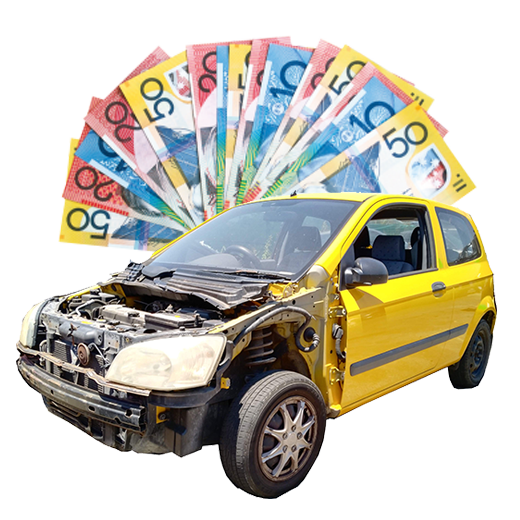Turning your old car into cash isn't just a savvy financial decision; it's a huge win for Australia's environmental and economic health. The whole idea behind recycling automotive parts is to take vehicles that have run their last race and carefully dismantle them to reclaim valuable materials like steel and aluminium. It helps to stop thinking of your old car as junk and start seeing it for what it is: a treasure chest of resources just waiting to be tapped.
Why Recycling Automotive Parts Matters
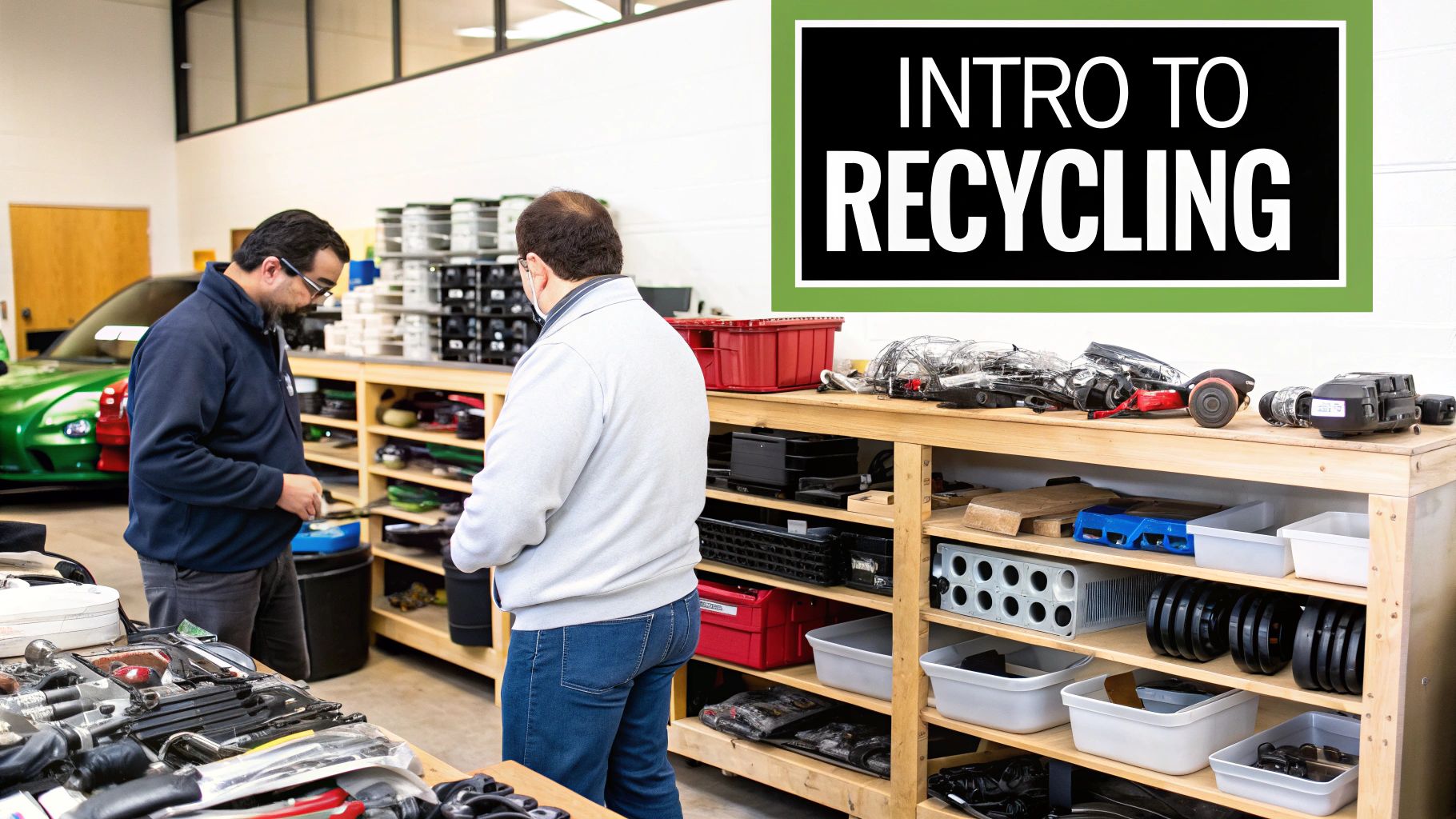
When a car gets to the end of the road, it presents a massive opportunity. Instead of letting it slowly rust away in the driveway or shipping it off to a landfill, you can plug into a system that benefits everyone. The principle is simple: a car is worth more than just its working bits and pieces; it's a dense source of raw materials.
This guide is here to pull back the curtain on the whole process. We'll walk you through the tangible benefits, pinpoint which parts are actually worth the most, and show you the simple steps to work with a professional service like Auto Removal Adelaide to get paid for your old vehicle.
A Treasure Trove of Materials
The average passenger car is a complex machine, built from all sorts of materials, and nearly all of them have recycling potential. Most of its weight comes from metals, which are always in high demand in the recycling industry.
Here's a quick look at what's under the bonnet and in the body:
- Steel: Making up most of the car's frame and body, steel is fantastic because it can be recycled over and over again without losing any of its strength or quality.
- Aluminium: You'll find it in the wheels, engine block, and transmission. Recycling aluminium saves a staggering 95% of the energy it takes to make it from scratch.
- Precious Metals: Tucked away inside the catalytic converter are tiny amounts of platinum, palladium, and rhodium. Don't let their size fool you; they're incredibly valuable.
- Plastics and Glass: Things like bumpers, dashboards, and windows aren't just rubbish. They can also be recovered and given a new life in other products.
When you start looking at an old car this way, you see its true potential. It's not just one big lump of scrap; it's a collection of valuable goods.
The Bigger Picture Impact
The choice to recycle your car parts reaches far beyond your own backyard. It's a key part of what’s called the circular economy—a system designed to keep resources in use for as long as possible, wringing every bit of value out of them before they're recovered and turned into something new.
By choosing to recycle, you're not just getting rid of an old car. You're actively helping to conserve resources, save energy, and cut down on greenhouse gas emissions. It's a simple act with a powerful ripple effect that strengthens our local economy and the environment.
We've put this guide together to give you the information you need to make a smart choice. You’ll soon see that turning that old clunker into cash is a responsible, rewarding, and surprisingly easy thing to do.
The Environmental and Economic Rewards
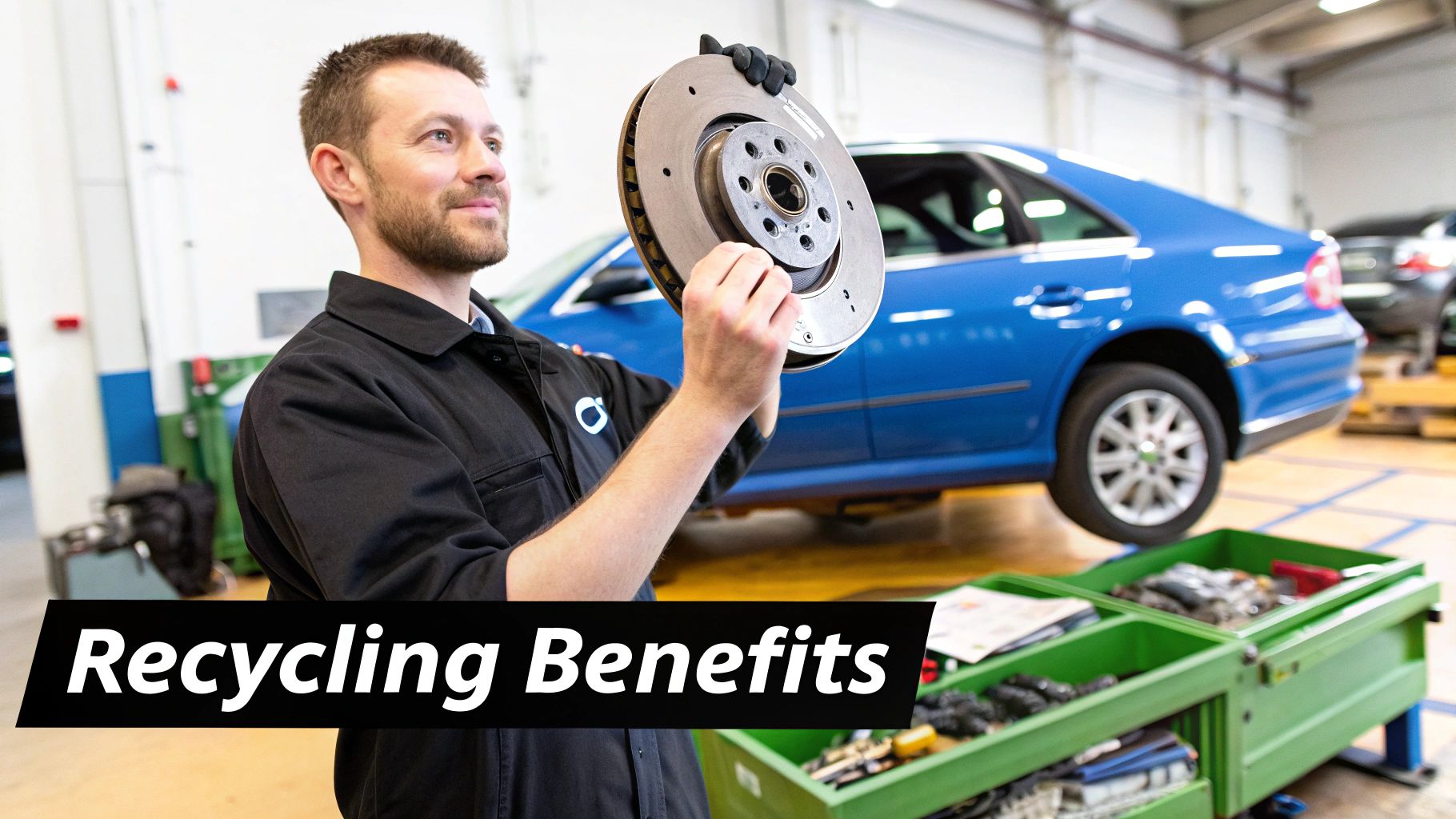
Deciding to recycle your old car parts does more than just clear out some space in the garage. It’s a choice that packs a real punch, creating huge wins for the environment while putting cash right back into your pocket. You’re essentially turning what looks like a problem—a clapped-out car—into a valuable resource for the planet and a bonus for your bank account.
The environmental impact is genuinely massive. Forging new metals from raw ore is an incredibly demanding process, burning through enormous amounts of energy and leaving a hefty carbon footprint. When you recycle metals like steel and aluminium, you sidestep that whole destructive cycle. It's a direct way to conserve our natural resources and drastically cut down on energy use.
Think about aluminium. Making it from recycled materials uses around 95% less energy than producing it from scratch (from bauxite ore). That simple fact means a huge drop in greenhouse gas emissions for every single recycled part, from the alloy wheels to the engine block.
Slashing Carbon Emissions
The green benefits really hit home when you look at steel, which makes up the bulk of most cars. Recycling steel from end-of-life vehicles is a crucial part of Australia's plan to cut carbon emissions. In fact, recycling automotive steel slashes CO₂ emissions by about 58% compared to making it from raw materials.
When you consider that transport is responsible for roughly 18% of Australia's total carbon emissions, you can see how improving car parts recycling isn’t just about saving resources—it's a direct action against climate change.
Proper recycling also stops hazardous materials from poisoning our local environment. Old cars are full of nasty fluids like engine oil, coolant, and brake fluid. If left to rust in a paddock, these chemicals can easily seep into the ground, polluting soil and making their way into our waterways.
Professional auto recyclers have the right gear to safely drain and dispose of these toxic substances. They make sure none of it ever harms the local ecosystem, and that responsible handling is a key part of the whole process.
Fuelling a Circular Economy
On top of the environmental pluses, recycling car parts is a major boost for the local economy. It’s a perfect example of what experts call a circular economy—a smart system designed to eliminate waste by constantly reusing resources. Instead of the old "take-make-throw away" model, recycling creates a loop where materials are recovered and fed back into the system.
This creates a positive ripple effect. It supports a whole range of skilled jobs right here in Adelaide, from the technicians who carefully dismantle the vehicles to the specialists who process the recovered metals.
It also gives local manufacturers a reliable source of high-quality, affordable raw materials. This reduces their production costs and means they don’t have to rely so much on expensive imported resources, making Aussie industries stronger and more competitive.
Your Direct Financial Return
For you, the best part is the direct and immediate financial payoff. Your old car isn't junk; it’s a commodity. Its value is tied to the weight and type of metal that can be recovered from it, and a reputable service like Auto Removal Adelaide turns that hidden value into instant cash.
The clear benefits for your wallet are:
- Instant Cash Payment: You get paid on the spot for a vehicle that was just taking up space and possibly costing you in rego.
- No Hidden Costs: Proper removal services include free towing, so you don't have to worry about any sneaky out-of-pocket expenses.
- Fair Market Value: The amount you're paid is based on current scrap metal prices, so you know you’re getting a fair price for your car's materials.
By turning your old car into cash, you’re not just making a clever financial decision. You’re playing an active role in a sustainable system that helps the environment and supports the Adelaide economy. If you’re wondering what your car might be worth, our guide on how much auto wreckers pay for cars breaks it all down.
What Are the Most Valuable Parts of a Scrap Car?
It's easy to look at an old, clapped-out car and just see a hunk of junk. But to us in the recycling game, that vehicle is a goldmine of different materials and components, each with its own specific value. Knowing which parts are worth the most is the key to understanding how we calculate your cash offer when you recycle your old car.
It’s about more than just the weight of the steel. While the car's body forms the baseline for the price, certain parts hidden inside contain high-demand materials that can really boost the overall payout. Think of it as a treasure hunt – the car itself is the map, but the real prizes are tucked away under the bonnet and along the chassis.
The Heavy Hitters: Engine and Transmission
Right at the heart of your car’s scrap value are the two biggest and heaviest mechanical parts: the engine and the transmission. These are incredibly dense, complex pieces of machinery, built mainly from high-quality steel and aluminium. Their sheer weight alone makes them the biggest single contributor to the car's overall scrap metal value.
A complete engine block isn't just a lump of metal to a recycler. It’s a high-value item because melting it down to recover the steel and aluminium is massively more energy-efficient than making those metals from scratch. A car with its engine and transmission still inside will always be worth more than one that’s been stripped of these core parts.
The Bottom Line: The presence and condition of the engine and transmission are the biggest factors in determining the base value of a scrap car. Even if they don’t run, the materials they're made from are incredibly valuable to recyclers.
The infographic below shows how the different parts of a car stack up by material type, and it's clear that the engine and its related components are a huge piece of the pie.
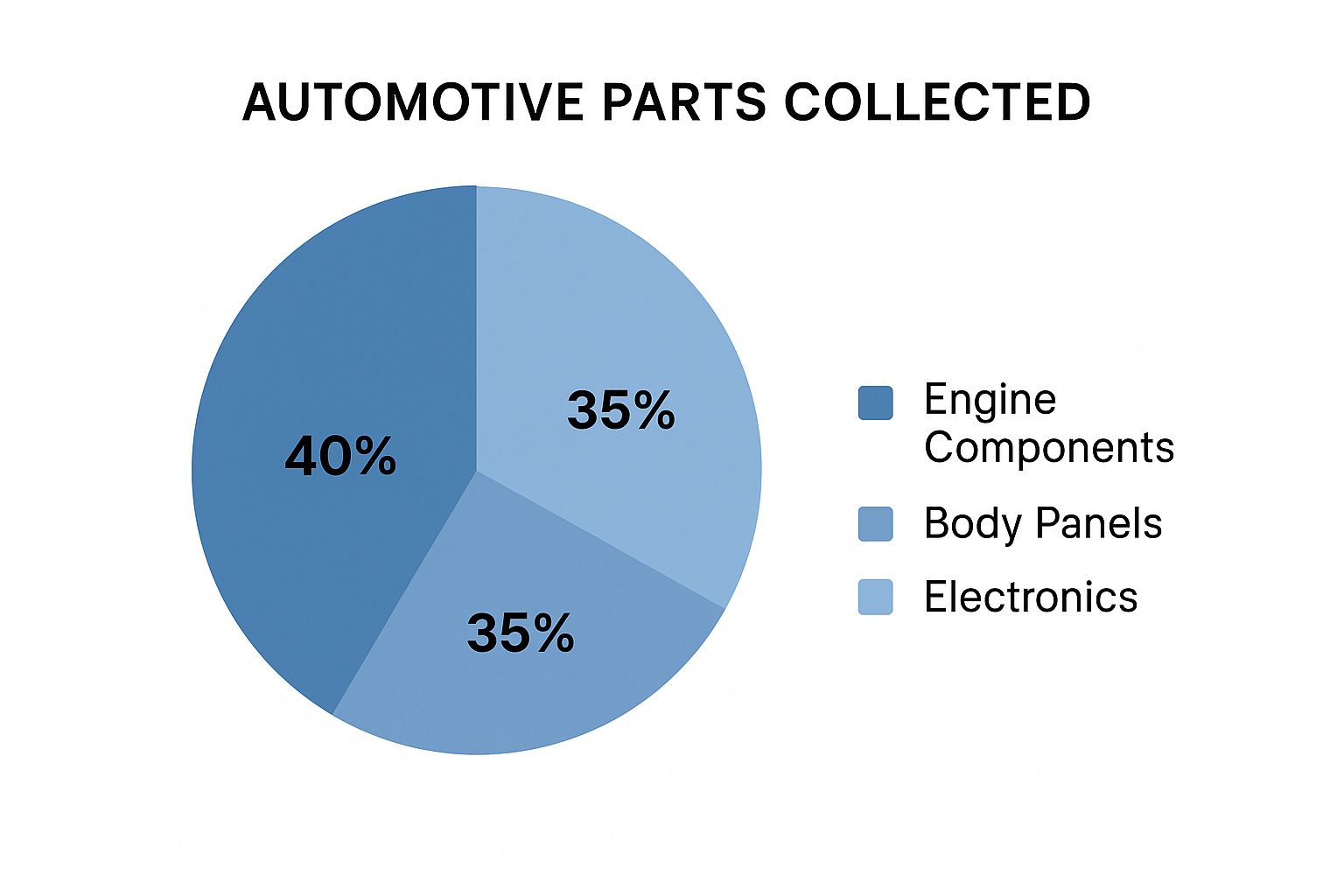
As you can see, mechanical parts like the engine and transmission make up the lion's share of valuable materials that we recover from end-of-life vehicles.
The Unsung Hero: The Catalytic Converter
While the engine provides the bulk, the most valuable part relative to its size is almost always the catalytic converter. Tucked away in the exhaust system, this small device is packed with a ceramic honeycomb structure that's coated with a cocktail of precious metals.
Its job is to turn toxic exhaust fumes into less harmful gases, and it does this using tiny amounts of:
- Platinum: A rare and highly sought-after metal.
- Palladium: Another valuable member of the platinum group, essential in electronics.
- Rhodium: One of the rarest and most expensive precious metals on the planet.
The small quantities of these metals inside a single catalytic converter make it a top-tier item for specialist recyclers. The process to extract them is complex, but the high market price for these elements makes it well worth the effort and adds a very nice bonus to your car’s total scrap value.
Bulk Metals: Steel and Aluminium
Beyond the star components, the rest of the car's body provides a solid foundation of value. The chassis, doors, boot, and body panels are all made from steel, which is infinitely recyclable. This steel accounts for most of the vehicle's weight and, in turn, a big chunk of its scrap price.
Aluminium is another key player. It's much lighter than steel and is often used for modern engine blocks, wheels, and even some body panels. Recycling aluminium is a huge win for the environment, saving up to 95% of the energy it takes to produce it from raw ore. Aluminium wheels, in particular, are a great find for any recycler.
If you're curious about how different metals affect the final payout, checking the latest scrap metal car prices can give you a real-time look at market rates.
Other Valuables Hiding in Plain Sight
While the "big three" – the engine, catalytic converter, and bulk metals – are the main event, plenty of other parts chip in to increase your final cash offer.
To give you a clearer picture, here’s a quick breakdown of common recyclable car parts and what they’re made of.
A Guide to Recyclable Automotive Components
| Component Category | Examples | Primary Material | Recycling Notes |
|---|---|---|---|
| Mechanical Parts | Engine Block, Transmission, Axles | Steel, Aluminium | The heaviest and most valuable components, forming the base scrap price. |
| Exhaust System | Catalytic Converter, Muffler, Pipes | Platinum, Palladium, Rhodium | The catalytic converter contains precious metals, making it extremely valuable. |
| Wheels & Tyres | Rims, Tyres | Aluminium, Steel, Rubber | Aluminium alloy wheels are worth significantly more than steel ones. |
| Electrical System | Battery, Alternator, Starter Motor, Wiring | Lead, Copper, Aluminium | The copper wiring throughout the car adds up, and lead-acid batteries are recycled. |
| Body & Interior | Doors, Bonnet, Bumpers, Dashboard, Seats | Steel, Plastic, Glass, Foam | These materials form the bulk of the car's weight and are all recyclable. |
As you can see, nearly every part of the car has a role to play in the recycling process. From the battery to the wiring loom snaking through the chassis, it all adds up.
Ultimately, a car’s scrap value is the sum of all its parts. By understanding where the real value lies, you can better appreciate the offer you receive and see why it’s so important to choose a recycler who knows how to get the most out of every single component.
How To Prepare Your Car For Recycling
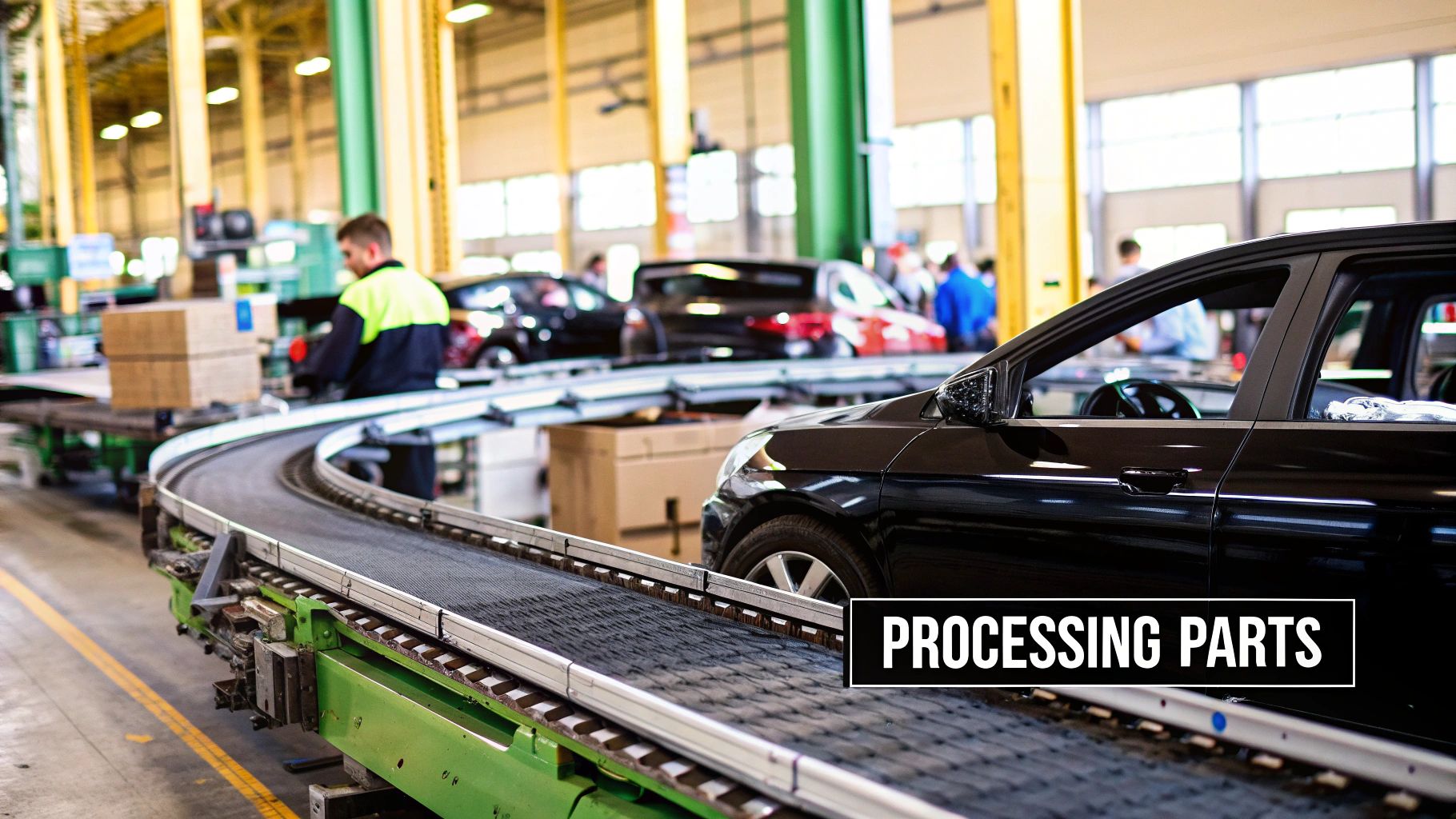
Getting your old car ready for recycling is a pretty straightforward process, but a few key steps can make all the difference. Think of it as a final send-off that makes the whole transaction smoother, faster, and gets you the most cash possible.
A little bit of prep work ensures everything from the initial quote to the final tow-away is completely organised and stress-free.
Clear Out All Your Personal Belongings
First things first, and it’s the one people most often forget: give your car a proper clean-out. It’s amazing what we accumulate over the years. Cars become mobile storage units, filled with odds and ends in the glovebox, under the seats, and tucked away in the boot.
Before our tow truck arrives, it pays to do one last sweep. You’d be surprised what you might find—that missing pair of sunnies, old documents, or a handful of loose change. Once we tow the car, those items are gone for good, so taking a dedicated 15-20 minutes for a final clear-out is time well spent.
Be sure to check these classic hiding spots:
- Glove Box & Centre Console: This is where you'll find old rego papers, personal documents, and other small items.
- Under the Seats: The black hole for lost phones, wallets, and kids' toys.
- Door & Seat-Back Pockets: A common dumping ground for old maps, receipts, and takeaway wrappers.
- The Boot: Don't forget to lift the floor mat to check for the spare tyre and any tools you want to keep.
This isn't just about getting your stuff back; it makes for a much cleaner handover and means the car is ready for immediate processing when it reaches our yard.
Gather Your Proof of Ownership
To sell any vehicle—even if it's just for scrap—you absolutely have to prove you're the legal owner. This is a non-negotiable legal step that protects everyone involved. Having your documents sorted out beforehand is the best way to speed things up.
You'll need two simple things:
- Proof of Ownership: This is usually the vehicle's title or registration papers. It’s the document that officially links you to the car.
- A Valid Photo ID: Your driver's licence or another government-issued photo ID is perfect. We just need to confirm your identity matches the name on the title.
Honestly, having your title and ID ready to go when our team arrives is the single biggest thing you can do to guarantee a fast, seamless transaction. It lets us finalise the paperwork right there and then, and hand over your cash without any frustrating delays.
If you’ve misplaced your title, it’s best to get that sorted before you book a pickup. A quick call to your state's transport authority will put you on the right track for getting a replacement. For a more detailed guide, our article on how to dispose of a car has some extra tips on navigating the paperwork.
Leave the Fluids to the Professionals
It might seem like you're being helpful by trying to drain the oil, coolant, or leftover petrol before we get there. Please, do not attempt this yourself. These are hazardous materials that need specialised equipment and training to be handled and disposed of safely.
Professional auto recyclers are set up to manage these fluids correctly, following strict environmental rules. Trying to do it yourself can easily lead to a messy, dangerous spill that’s bad for your health and the local environment.
Let the experts at Auto Removal Adelaide take care of the messy stuff. Your job is to clear out the car and have the paperwork ready; we'll handle the rest. This ensures the recycling automotive parts process is not only efficient but also 100% environmentally responsible.
Staying Safe and Legal: What You Need to Know in Australia
When you’re recycling car parts, doing things by the book isn’t just a good idea—it’s an absolute must. Australia has some pretty clear rules in place, and they’re there for a good reason: to protect our environment and to keep people safe from the surprising number of hazards lurking inside an old car. Getting your head around these requirements makes the whole process smoother and gives you peace of mind that you’re doing the right thing.
First things first, you absolutely must work with a licensed auto recycler. It’s the golden rule. These are the pros who are legally bound to follow strict environmental laws for handling all the nasty stuff. Think about it – an old vehicle is a cocktail of toxic fluids and materials. A licensed operator like Auto Removal Adelaide has the proper gear and know-how to manage it all correctly, preventing a real mess for the environment.
Why You Can't Just Pull It Apart Yourself
Tempted to have a go at dismantling your car in the driveway? It’s a bad idea. Not only is it illegal in many situations, but it's also incredibly dangerous. A car that’s been sitting quietly for years is still packed with things that can cause serious harm without specialised training.
Here's a quick look at what you’re up against:
- Nasty Fluids: We’re talking engine oil, coolant, and brake fluid. These aren't just messy; they're toxic. A single spill can contaminate soil and seep into our waterways, causing ecological damage that lasts for years.
- Explosive Airbags: An undischarged airbag is basically a small explosive. If you handle it the wrong way, it can go off with enough force to cause severe injuries. There’s a specific, safe way to neutralise them.
- Pressurised Systems: Your car’s air conditioning system is under high pressure. If that refrigerant gets released improperly, it can cause instant frostbite and other serious injuries.
- Toxic Batteries: Car batteries are full of lead and sulfuric acid. Both are extremely hazardous and need to be taken to a proper recycling facility, not just dumped.
The bottom line is simple: working with a licensed professional is the only way to ensure these dangerous materials are dealt with according to Australian environmental standards. It's the safest choice for you, the community, and the planet.
The Paperwork: It's Easier Than You Think
While the safety side of things is complex, the legal paperwork is surprisingly simple. The main thing is proving the car is actually yours. This protects everyone involved from any potential legal headaches down the track.
Before we show up with the tow truck, just have these two things handy:
- Proof of Ownership: This is usually your vehicle's registration papers or title. It’s the official document that says the car belongs to you.
- Valid Photo ID: A current driver's licence or another government-issued photo ID works perfectly. We just need to match your face to the name on the ownership papers.
After your car has been collected, the final step is to cancel its registration. This is crucial—it officially takes the car off the road and means you’re no longer responsible for it. The process varies a little between states and territories, but it generally just involves lodging a form with your local transport authority. A bit of simple paperwork is all it takes to wrap up the recycling process cleanly and legally.
Looking Ahead: The Future of Automotive Recycling
The world of automotive recycling is changing, and fast. We're moving far beyond the old days of simply crushing steel and aluminium. As cars get smarter and more complex, the industry is stepping up, getting ready for a future filled with electric vehicles (EVs) and high-tech materials. This isn't just about keeping pace; it's about finding new, smarter ways to make sure every single part, from a small plastic clip to a powerful battery, gets a second life in a circular economy.
The biggest shift on the horizon? The rise of electric vehicles. While EVs are fantastic for cutting down on exhaust fumes, they bring a whole new set of challenges and opportunities when it comes to recycling automotive parts. The real game-changer is the EV battery.
The Critical Role of EV Battery Recycling
An EV's lithium-ion battery pack isn't like the old lead-acid battery in your petrol car. It's a highly sophisticated bundle of valuable, and often scarce, materials like lithium, cobalt, nickel, and manganese. Just tossing these into landfill is more than just a waste—it's an environmental risk and a squandering of resources we can't easily replace.
Because of this, a huge amount of effort is going into developing safe and efficient ways to recycle these batteries. It’s a much more involved process than traditional recycling, requiring careful dismantling to salvage individual cells and extract the precious metals locked inside. This does two crucial things: it prevents pollution and creates a local source for materials that are otherwise expensive and difficult to mine.
Being able to effectively recover rare earth metals from EV batteries is the cornerstone of sustainable transport. It closes the loop, meaning the materials from an old EV can be used to build the next generation of clean cars, reducing our dependence on new mining.
This focus on battery recovery is completely reshaping what automotive recycling even means.
Advanced Sorting and Artificial Intelligence
It’s not just about EVs. Technology is also transforming how we handle traditional cars. The era of sorting everything by hand is coming to an end. The future is all about advanced, automated systems that use artificial intelligence (AI) and machine learning to make the process quicker, safer, and far more accurate.
Picture a conveyor belt loaded with shredded materials from a car—a jumble of plastics, metals, and rubbers. High-speed cameras scan this mix, and AI algorithms identify different materials in a fraction of a second. Robotic arms or targeted jets of air then instantly sort them into clean, separate streams ready for recycling. That kind of precision just wasn't possible before.
This technological jump is especially important for recycling plastics from cars. In Australia, the waste plastic recycling market, which is closely tied to the auto sector, was valued at around USD 1.2 billion. It's expected to more than double by 2033, and these smart sorting systems are a big reason why. You can dive deeper into this growing market with the detailed analysis from IMARC Group.
With these innovations, we can recover a wider variety of materials at a much higher quality, including:
- Specific Plastic Polymers: We can now properly separate different types of plastics, like the polypropylene from bumpers and the PET from interior fabrics, so they can be turned into high-quality new products.
- Non-Ferrous Metals: It’s much easier to spot and separate valuable metals like the copper in wiring or the aluminium in engine blocks.
- Rare Earth Elements: We can even identify components that contain tiny but valuable amounts of rare earth metals used in a car's electronics.
This forward-thinking approach means that as our cars get more advanced, the recycling industry is right there with them, ready to turn today's cutting-edge automotive tech into tomorrow's sustainable resources.
Common Questions About Recycling Automotive Parts
Let's be honest, the world of car recycling can seem a bit murky. To help clear things up, here are some straight-shooting answers to the questions we get asked most often. Our goal is to give you the confidence you need to turn that old car into cash.
How Much Cash Can I Get for My Old Car Parts?
That’s the million-dollar question, isn't it? The truth is, there's no single price tag. The cash you'll get depends on a few key things: your car's total weight, its make and model, its overall condition, and what the market is paying for scrap metals like steel and aluminium right now.
Some parts can really bump up the price. We're talking about high-value components like:
- Catalytic Converters: These are packed with precious metals, making them a top prize.
- Complete Engines and Transmissions: They add serious weight and value.
- Aluminium Alloy Wheels: These fetch a much better price than basic steel rims.
A good, honest service will always give you a transparent quote, breaking down exactly how they arrived at their offer. You should know you're getting a fair price for what your car is truly worth.
Can I Recycle a Car That Is Damaged or Not Running?
Absolutely. In the world of recycling automotive parts, a car's main value is in its raw materials, not whether it can get you from A to B. It doesn't matter if your car has been in a serious prang, is riddled with rust, or has an engine that's completely given up the ghost – it’s still full of valuable materials.
At the end of the day, recyclers are after the steel frame, the aluminium engine block, and the copper wiring. Don't worry about its condition; professional outfits have the gear to tow vehicles in any state of disrepair.
Do I Have to Arrange Towing to the Recycling Facility?
Not at all. In fact, that's one of the biggest perks of using a professional car removal service – we handle all the heavy lifting for you. You won't have to lift a finger or spend a cent getting your non-running car to a scrap yard.
Companies like Auto Removal Adelaide include towing as part of the deal, completely free of charge. We'll schedule a pickup right from your driveway, at a time that suits you. It’s all about making the process as easy and stress-free as possible.
Ready to turn your old vehicle into instant cash? Auto Removal Adelaide offers top dollar for cars in any condition, with free towing across the Adelaide area. Get Your Free Quote Today!

